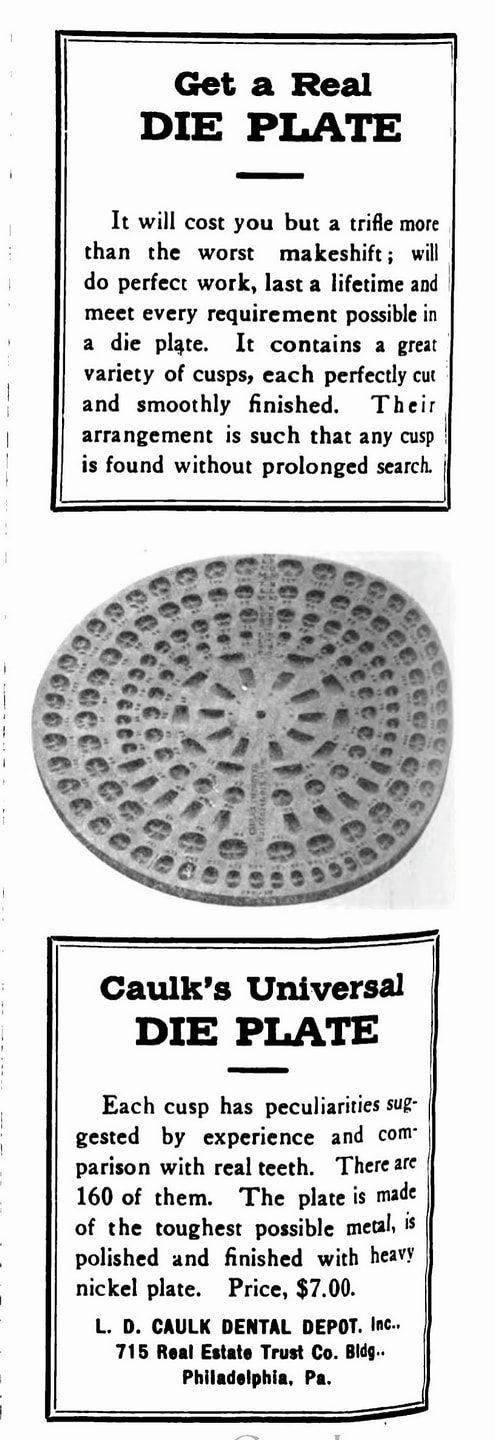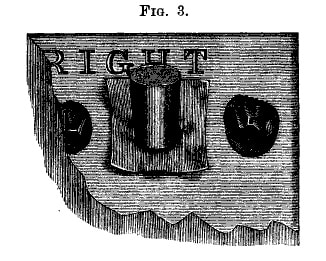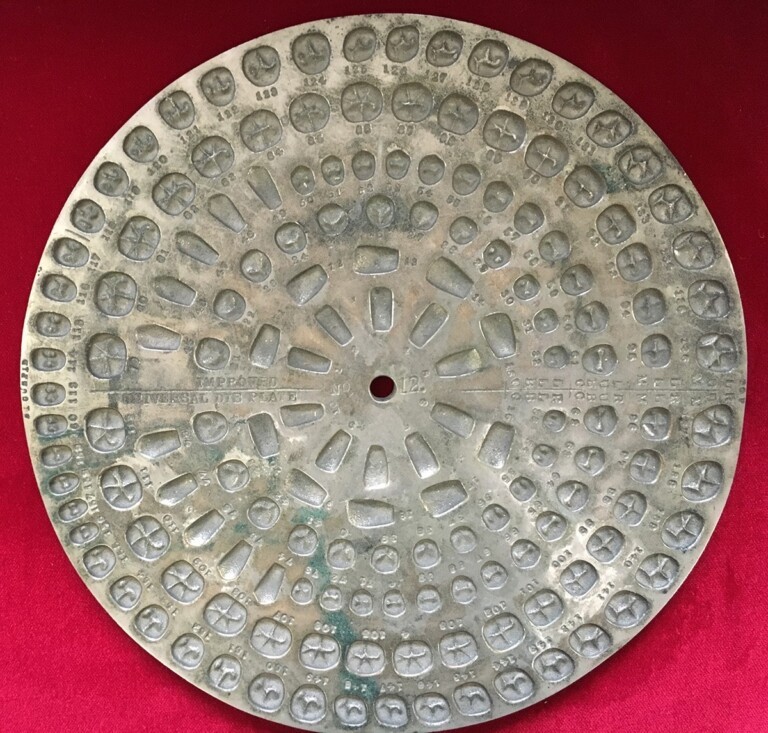It looks like a large, mangled drink coaster or a circular tablet from some alien race.
It’s heavy enough to be used as a doorstop, and it’s filled with tooth-shaped crevices.
What is this artifact and what, in the long-forgotten dental past, was it used for?
Caulk’s Universal Die Plate, advertised through such publications as The Dental Cosmos and The Dental Brief from the late 19th century into the early 20th, was used to form crowns from metal alloys to cover teeth.
Today, no fewer than eight of this once-popular item for the dental lab are listed for sale on eBay and other online auction sites.
The version shown above was sold by the L. D. Caulk Dental Depot, based in Philadelphia, Pennsylvania and another version was sold by SS White.

Caulk’s Die Plate from The Dental Brief, circa 1909
How was the “Real Die Plate” use
After a bit of time spent digging through old copies of The Dental Cosmos, I located an article by E. T. Star of Philadelphia titled, “Improved Die-Plate and Hubs for Shaping Metal Cap-Crowns.” It was published in Volume 29, Issue 8, August 1887 on pages 482-485.
Basically, the die plate used to form crowns from metal alloys to cover teeth, originally resolved the universal problem of how to create lifelike (in function, not appearance) caps for damaged teeth. A crown could be made quickly, consistently, and would allow the tooth to properly function with the opposing tooth. Hence, the popularity of the die plate.
How did it work?
The dentist poured molten alloy into a mold to make a type of plug, placed thin gold foil over one of the tooth die openings, and positioned the plug on top.

Illustration from The Dental Cosmos.
Then the dentist pounded the metal plug with a hammer until it took the form of tooth die. A dentist needed more than professional knowledge to practice in the 19th century — he needed a good right arm!

Illustration from The Dental Cosmos.
After all was said and done, the dentist had created a metal cap with a gold foil covering. Once cut out of the mold, it was ready to cap a tooth.


